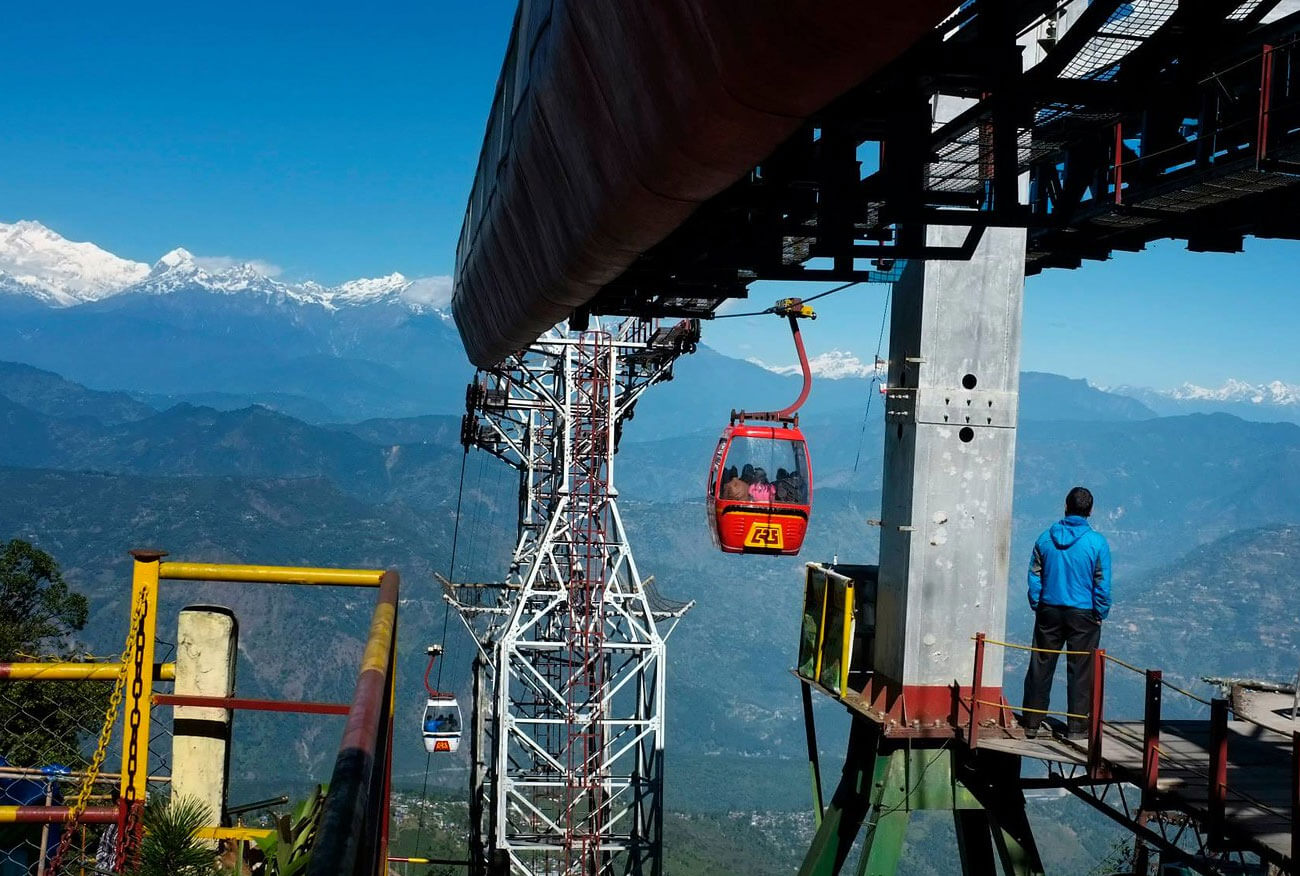Darjeeling, a charming hill station in the Indian state of West Bengal, is known for its stunning natural beauty, rich cultural heritage, and delicious tea. Among its many attractions, the Darjeeling Rangeet Valley Passenger Ropeway stands out as a unique and thrilling experience that attracts tourists from all over the world. This cable car ride offers a bird’s eye view of the beautiful valley below, and a chance to witness the majestic Himalayan mountains up close. In this article, we will explore the history, features, and FAQs of the Darjeeling Rangeet Valley Passenger Ropeway, and why it should be on every traveler’s bucket list.
History of Rangeet Valley Ropeway:
The Darjeeling Rangeet Valley Passenger Ropeway, also known as the Darjeeling Ropeway, was built in 1968 and is one of the oldest cable car systems in India. It was constructed by the Forest Development Corporation of West Bengal to transport timber from the forests of Singla to the plains of Teesta. However, the project was soon abandoned due to financial difficulties, and the cable car system was left unused for several years.
In 1988, the Darjeeling Gorkha Hill Council took over the ropeway and renovated it for tourism purposes. The cable car system was reopened to the public in 1988, and since then, it has been a popular attraction for tourists visiting Darjeeling.
Show More
Ropeway Features:
The Darjeeling Rangeet Valley Passenger Ropeway is a 5 km long cable car system that connects the Singla Bazaar in Darjeeling to the Tukvar Tea Estate. It has 16 cable cars, each of which can carry up to six passengers. The ride takes approximately 45 minutes and offers stunning views of the Rangeet River, the tea gardens, and the surrounding Himalayan mountains.
The cable cars are equipped with comfortable seats and large windows, allowing passengers to enjoy the panoramic views of the valley. The cable car system operates daily from 10 am to 4 pm, and tickets can be purchased at the Singla Bazaar station or online.
How to Reach the Darjeeling Rangeet Valley Passenger Ropeway?
To reach the Darjeeling Rangeet Valley Passenger Ropeway, one can take a taxi or hire a private car from Darjeeling town. It is located approximately 3 km from the main town, and the journey takes around 20 minutes. Alternatively, visitors can take a shared taxi or bus from Chowk Bazaar in Darjeeling to Singla Bazaar, the starting point of the cable car ride.
What to Expect from the Darjeeling Rangeet Valley Passenger Ropeway Ride?
The Darjeeling Rangeet Valley Passenger Ropeway ride offers a thrilling experience as passengers soar high above the valley, taking in breathtaking views of the tea gardens, river, and mountains. The cable car system
Safety Precautions to Keep in Mind While Riding the Darjeeling Rangeet Valley Passenger Ropeway
While the Darjeeling Rangeet Valley Passenger Ropeway is a safe and well-maintained cable car system, it’s essential to take a few precautions while riding it. Visitors should follow the instructions given by the cable car staff, including the proper way to board and exit the cable car. It’s also important to remain seated during the ride, fasten the seatbelt properly, and avoid leaning out of the window or standing up while the cable car is in motion.
Best Time to Visit the Darjeeling Rangeet Valley Passenger Ropeway
The Darjeeling Rangeet Valley Passenger Ropeway is open throughout the year, but the best time to visit is between October to December and March to April. During these months, the weather is pleasant, and the skies are clear, offering unobstructed views of the valley and the mountains. However, visitors should keep in mind that the cable car system operates only during the daytime, and it’s essential to plan the visit accordingly.
Nearby Attractions to Explore After the Darjeeling Rangeet Valley Passenger Ropeway Ride
After experiencing the thrill of the cable car ride, visitors can explore several nearby attractions. The Tukvar Tea Estate, located at the end of the cable car ride, is a beautiful tea garden that offers a glimpse into the tea-making process. Visitors can take a guided tour of the estate, taste different varieties of tea, and purchase souvenirs.
The Singla Bazaar, the starting point of the cable car ride, is a small village that offers a glimpse into the local way of life. Visitors can explore the narrow streets, interact with the locals, and try local delicacies such as momos and thukpa.
